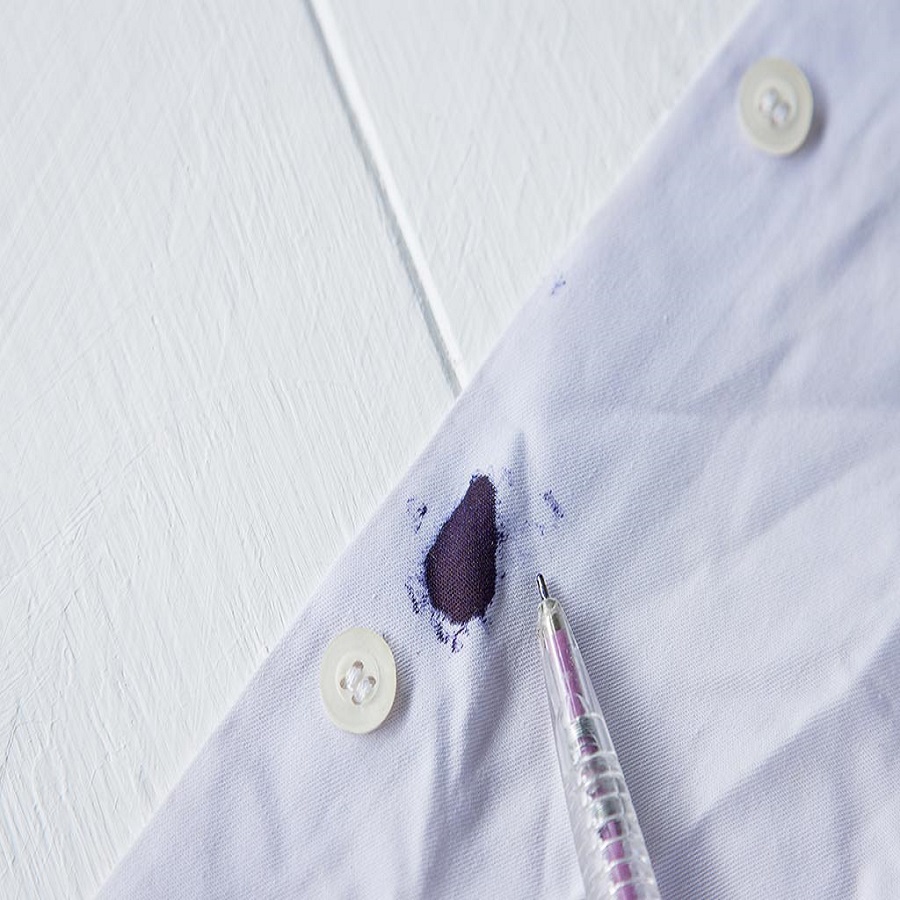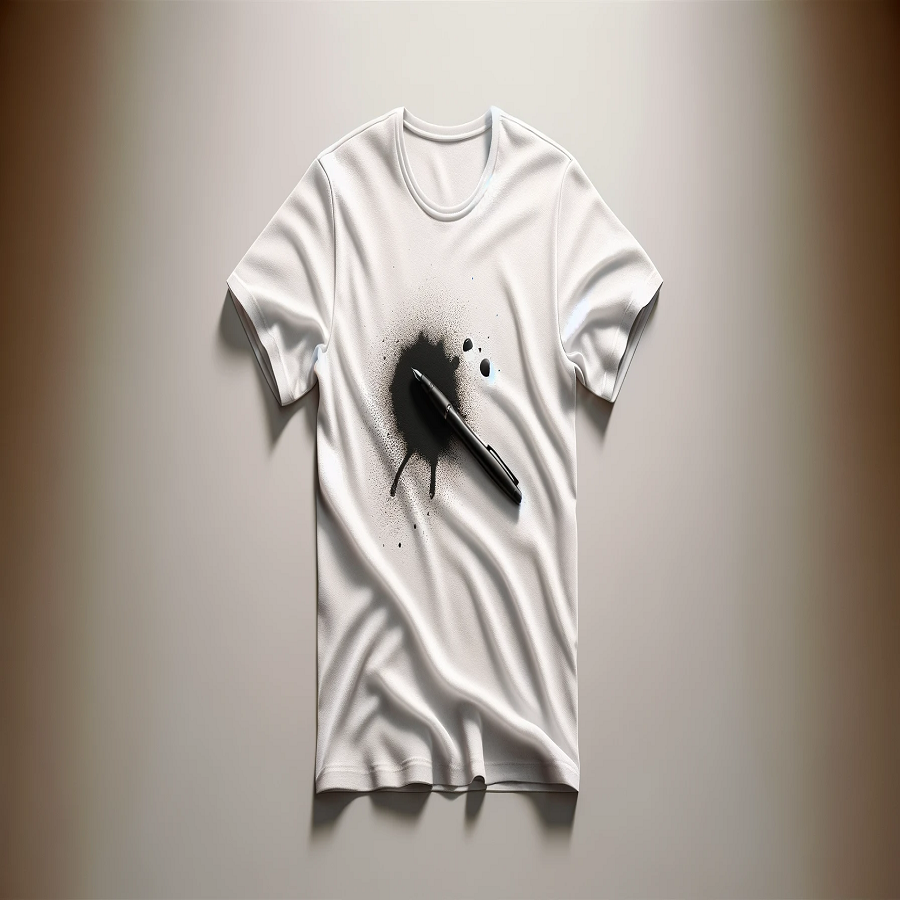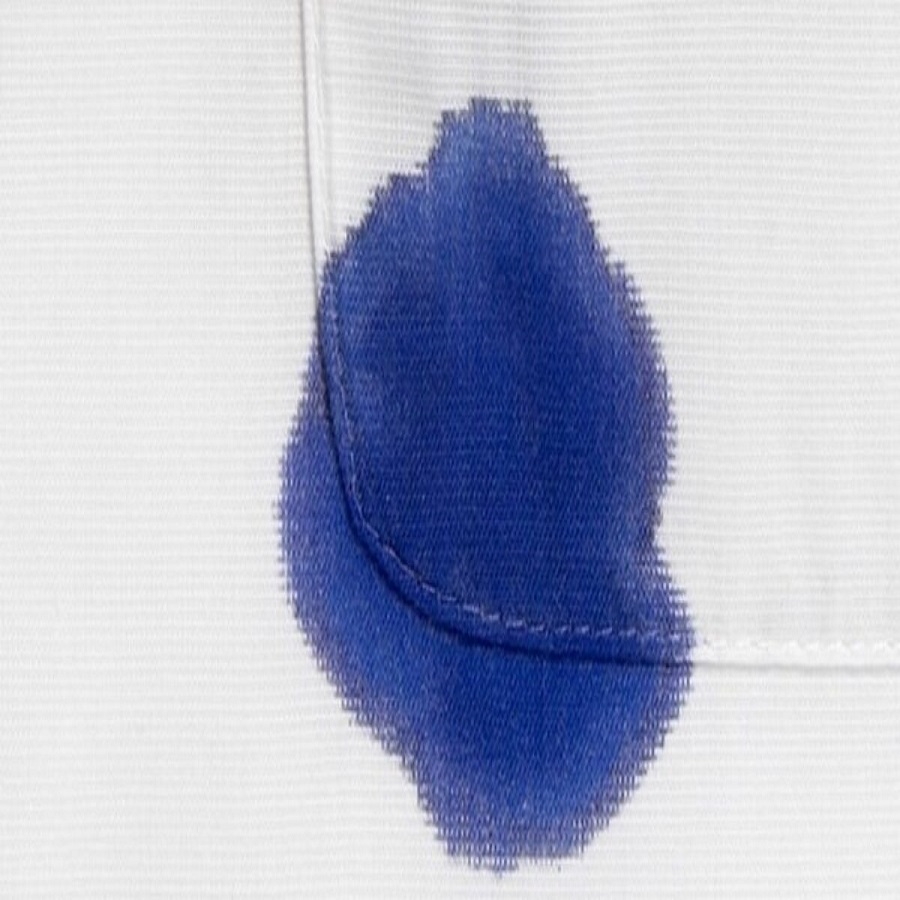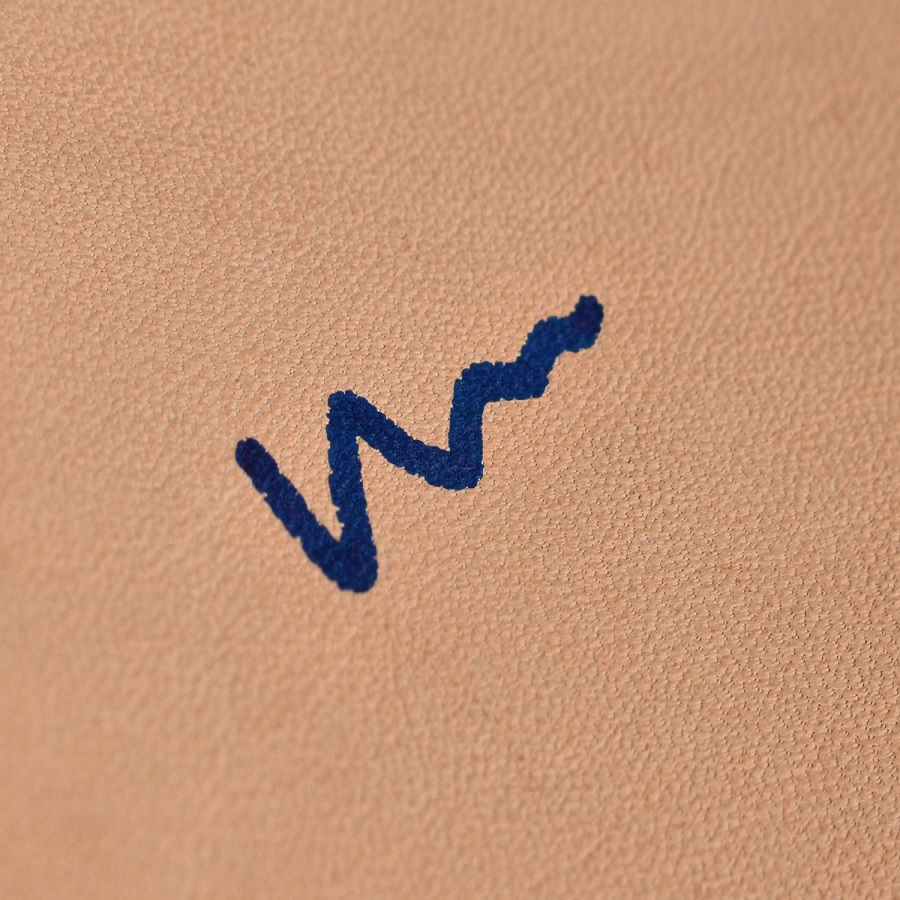Types of Ink Stains on Fabrics
Understanding the different types of ink stains is key to choosing the right removal strategy. Ink stains come in various forms, and each may require a different approach for effective removal.
Ballpoint Ink Stains
Ballpoint ink is oil-based, making these stains tricky to remove. They usually appear thick and greasy.
Gel Ink Stains
Gel inks are pigment-based and can be particularly stubborn due to their high viscosity and saturation level.
Fountain Pen Ink Stains
Fountain pen ink is water-based. It might seem easier to remove, but it can quickly spread if not treated properly.
Permanent Marker Stains
Permanent markers contain various solvents and resins. They can be the toughest to remove from fabrics.
Highlighter Stains
Highlighters, though often less intense, can leave bright, fluorescent marks that are hard to miss.
Successfully removing ink from fabric involves recognizing the type of ink and acting promptly. Pre-treatment steps are crucial before applying home remedies or commercial removers.

Pre-Treatment Steps for Ink Stain Removal
Before you begin the process of removing ink from fabric, it’s important to act quickly. The sooner you address the stain, the better your chances of removing it completely. Here’s a quick guide on how to prepare the stained fabric for treatment:
- Blot the Stain: Use a clean cloth or paper towel to gently blot the area. Do not rub, as this can spread the ink and make the stain worse.
- Isolate the Stain: Place the stained fabric on top of a clean, dry towel or cloth. This prevents the ink from bleeding onto other parts of the fabric.
- Rinse with Cold Water: If the fabric is washable, run cold water through the back of the stain. Cold water helps dilute the ink without setting the stain.
- Apply Stain Remover: If you have a commercial stain remover or a home remedy ready, apply a small amount to the stained area.
- Let It Sit: Allow the remover to penetrate the stain for a few minutes before proceeding with the full stain removal process.
Remember, each type of ink stain may require a slightly different approach, but these pre-treatment steps are generally effective across the board. They are the foundation before applying other ink removal methods, whether natural or commercial.
Home Remedies for Removing Ink from Fabrics
When it comes to removing ink from fabric, not all hope is lost if you don’t have a commercial stain remover on hand. Home remedies can be quite effective, especially if you act fast. Below are some trusted DIY solutions to tackle those daunting ink marks:
- Rubbing Alcohol: Apply rubbing alcohol to a cotton ball and dab it on the stain. Do not rub; just blot gently. Alcohol breaks down the ink’s oils, making removal easier.
- Hairspray: Hairspray with a high alcohol content can also work. Spray it directly on the stain, let it sit for a few minutes, then blot away.
- Milk Soak: Soaking the stained area in milk overnight can help lift ballpoint ink stains.
- Salt: Sprinkle salt on a wet ink stain, let it absorb the ink, and then brush it off.
- Cornstarch and Milk: Mix cornstarch with milk to create a paste, apply it to the stain, and once it dries, brush it away.
- Vinegar and Cornstarch: Combine vinegar with cornstarch to make another effective paste for ink stain treatment.
- Lemon Juice: Apply lemon juice to the stain and let it sit before washing it out. Lemon’s natural acidity helps remove the ink.
- Toothpaste: Non-gel toothpaste can help lift ink stains when applied, left to dry, and then rinsed out.
Each of these methods can be helpful depending on the type of ink and fabric. It’s always recommended to test a small, inconspicuous area of the fabric first to ensure there’s no damage or discoloration. With patience and persistence, home remedies can save your fabrics from ink stains without requiring a trip to the store.
Commercial Ink Stain Removers
While home remedies are great for removing ink from fabric, sometimes you might need something stronger. Commercial ink stain removers are specifically formulated to tackle tough stains. They come in various forms such as sprays, pens, and liquids. Below are some options available in the market:
- Stain Sticks/Pens: These are portable and allow precise application directly on the stain.
- Liquid Stain Removers: Apply these directly to the stain or add to the wash for overall stain fighting.
- Spray Stain Removers: Easy to use, simply spray on the stained area before washing.
- Oxygen-based Bleaches: These can be used as a soak or added to your wash cycle to help remove ink stains.
- Enzyme-Based Cleaners: These are good for breaking down ink proteins, especially in washable fabrics.
When using commercial removers, it is important to follow the instructions carefully. Always test the product on a small, hidden area first. This ensures it won’t damage or discolor your fabric. Allow the remover to sit on the stain for the recommended time before washing the item as usual.
Some ink stains may need multiple treatments. Be patient and repeat the process if necessary. Always check the stained area before drying the fabric. Heat can set the stain, making it harder to remove.
Remember, the quicker you act, the better your chances of getting the stain out. For best results, use commercial ink stain removers in combination with the pre-treatment steps discussed earlier.

Step-by-Step Guide to Removing Ink Stains
When tackling the challenge of removing ink from fabric, a step-by-step approach is essential. Here’s a straightforward guide to improve the chances of eradicating those stains:
- Identify the Ink: Start by determining the type of ink. This directs your removal method.
- Blot the Stain: Immediately blot the stain with a clean cloth. Avoid rubbing to prevent spreading.
- Pre-Treat with Cold Water: Run cold water through the fabric’s backside, diluting the ink.
- Apply Remover: Based on the ink type, apply a suitable home remedy or commercial product.
- Let it Sit: Allow the remedy to work for a few minutes without disturbing the fabric.
- Gently Agitate: If needed, work the remover gently into the stain with a toothbrush.
- Rinse Thoroughly: Rinse out the remover completely under cold running water.
- Repeat if Necessary: Persistent stains may require you to repeat the process.
- Wash Normally: Once the stain lightens or disappears, launder the fabric as usual.
- Air Dry: Avoid using a dryer until you’re sure the stain is gone. Heat can set stains.
By following these steps and acting quickly, removing ink from fabric becomes much more manageable. Remember, the key to success is prompt action and choosing the right remedy for the ink type and fabric.
Tips for Treating Different Types of Fabric
When removing ink from fabric, one size does not fit all. Different fabrics require tailored approaches to avoid damage and effectively lift ink stains. Here are some fabric-specific tips to keep in mind:
Cotton and Linen
Cotton and linen are resilient and can handle more rigorous cleaning methods. Try soaking the stained area in rubbing alcohol or a mixture of vinegar and cornstarch. These materials can usually withstand the use of stronger commercial stain removers, but always check the care label first.
Wool and Silk
Wool and silk are delicate and require gentle care. Avoid hot water and harsh chemicals which can cause shrinkage or discoloration. Instead, blot the stain with a mixture of mild soap and cool water. You may also use a gentle enzyme-based cleaner designed for delicate fabrics.
Synthetic Fabrics
This includes materials like polyester and nylon. Synthetics often respond well to alcohol-based treatments, such as rubbing alcohol or hairspray. Apply the treatment, blot gently, and rinse thoroughly. Be cautious with heat, as synthetic fabrics can melt or warp.
Leather and Suede
Leather and suede are special cases and can be easily damaged. For these, avoiding water is crucial. Instead, use a dry method like applying cornstarch to absorb the ink. For persistent stains, professional cleaning is often the safest option.
No matter the fabric, it’s important to test your chosen removal method on a small, hidden area first. This ensures that it won’t cause harm to the material. And remember, removing ink from fabric is always easiest when tackled promptly.
Preventive Measures to Avoid Ink Stains
Preventing ink stains is often easier than removing them from fabric. To minimize the risk of ink-related accidents, consider these simple and effective strategies:
- Use Protective Coverings: Always use a desk pad or cloth underneath when writing. This keeps fabric safe from stray marks.
- Be Mindful with Pens: Ensure that you cap pens after use. This reduces leaks and accidental stains.
- Store Pens Properly: Keep pens in a holder or case, not loose in bags or pockets.
- Check Pockets before Laundry: Look in pockets for pens before washing clothes. This avoids ink leaks in the wash.
- Use Washable Pens: Opt for washable ink pens, especially for children’s use. They’re easier to clean if stained.
- Keep Fabric Away from Ink: During craft projects, move fabric items away to prevent ink splatters.
By following these preventative tips, you can keep your fabrics clear from unwanted ink marks. Quick reactions to any potential stains also play a key role, so if an accident occurs, refer back to the treatment steps outlined earlier in this guide for removing ink from fabric.

When to Seek Professional Cleaning Services
While many ink stains can be treated at home with DIY methods or commercial products, some scenarios call for professional expertise. Here are situations when you should consider seeking professional cleaning services to remove ink from fabric:
- Stubborn Stains: If you’ve tried multiple rounds of treatment without success, professionals may have stronger, more effective methods.
- Delicate Fabrics: Items made from sensitive materials like silk or satin might need a professional’s gentle touch.
- Large or Spread Stains: Big stains or those that have spread significantly might be too daunting to tackle on your own.
- Valuable Items: For expensive garments or heirlooms, it’s best to trust a professional to avoid potential damage.
Professional cleaners often have specialized equipment and solvents not available to the public. They understand the nuances of different inks and fabrics, ensuring the best approach for removing ink stains without harming the material. When deciding, weigh the cost of the item and its emotional or financial value against the cleaning service fee. If the garment is irreplaceable or the potential for damage is high, professional cleaning is a wise choice.









